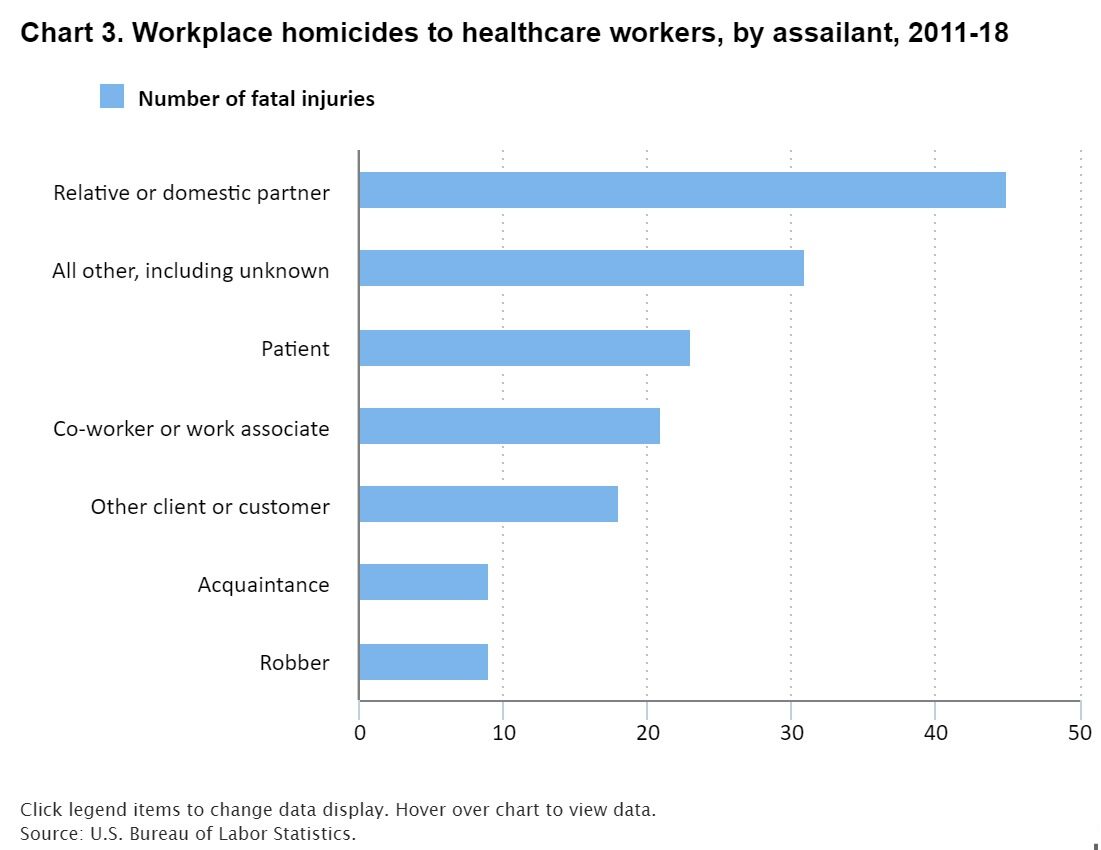Safeguarding Caregivers from Violence
by Kristin Rowan, Editor
We’ve published and talked a lot about caregiver safety, lone worker safety, and keeping your caregivers safe. Until the risk of violence to care at home workers is 0%, we will continue to provide this information and urge you to implement plans to lower the risk.
It’s nice to see that we’re not the only ones. Much of the following information comes from Lockton Affinity Home Care, along with reports from the U.S. Bureau of Labor Statistics and the Centers for Disease Control and Prevention.
Workplace Violence in Care at Home
Workplace violence is at a much higher risk among home care workers than other professions. The U.S. Bureau of Labor Statistics says that home health aides and home nursing assistance are five to seven times more likely to experience workplace violance than the average U.S. worker. Workplace violence can include verbal, non-verbal and written harrassment, bullying, sexual harassment, and physical attacks, up to and including death. A study from the CDC is discouraging:
Violence Stats from Centers for Disease Control & Prevention
- 18% to 65% of workers experiencing verbal abuse from patients
- As many as 41% workers have reported sexual harassment
- Between 2.5% and 44% of workers have reported being physically assaulted
Negative Consequences to Your Agency
According to Lockton, caregivers are impacted by violence in more ways than one. In addition to the physical and mental harm done by the violence itself, caregivers suffer from lower job satisfaction and higher burnout rates. They also may provide lower quality of care. Some start abusing drugs and alcohol. All of these lead to higher employee turnover and greater cost to the agency to hire and train new staff. Additionally, the poor quality of an abused worker can damage an agencies efficiency as well as their reputation.

Collect information and monitor conditions in the environment
Training, Policies, and Reporting
Lockton offers some specific recommendations to reduce the likelihood of your caregivers experiencing workplace violence.
By proactively managing workplace violence risks, your business can enable staff protection and support, align with regulatory compliance, emphasize a culture of safety, inform data-driven decision-making and contribute to the overall well-being of both employees and clients.
Implementation recommendations include:
- A zero-tolerance policy towards workplace violence.
- Policies and rules on the safety of lone caregivers in the field, such as regular cell phone contact or check-ins, and conducting home visits in pairs and/or with security escorts.
- Rules and strategies related to visits in homes where violence has occurred in the past.
Require staff to participate in ongoing education and training
Training employees on the types of physical and nonphysical acts and threats of workplace violence can increase awareness and reduce normalization. Additional education and training can focus on how to:
- Assess the work environment and surroundings for safety, including the presence of drugs of abuse, drug paraphernalia, weapons, and aggressive pets.
- Recognize signs of imminent violence, including verbal abuse and aggressive body language and/or posturing.
- Employ verbal de-escalation techniques.
- Utilize escape and egress techniques.
Create and maintain a culture of safety and quality throughout the organization
Identify an individual to be responsible for your organization’s workplace violence prevention program. They can implement policies and a standardized process to report and follow up on events or near-misses. Data collection and simple, accessible reporting structures show commitment to providing a safe and secure work environment. Regularly reporting incidents and trends to governance promotes transparency and further establishes accountability for the program.
Post-incident support services can also have great value for home healthcare workers’ well-being. These services may include peer support, formal debriefing, trauma-crisis counseling and employee assistance programs.
# # #


Kristin Rowan has been working at The Rowan Report since 2008. She is the owner and Editor-in-chief of The Rowan Report, the industry’s most trusted source for care at home news .She also has a master’s degree in business administration and marketing and runs Girard Marketing Group, a multi-faceted boutique marketing firm specializing in content creation, social media management, and event marketing. Connect with Kristin directly kristin@girardmarketinggroup.com or www.girardmarketinggroup.com
©2025 by The Rowan Report, Peoria, AZ. All rights reserved. This article originally appeared in The Rowan Report. One copy may be printed for personal use: further reproduction by permission only. editor@therowanreport.com







